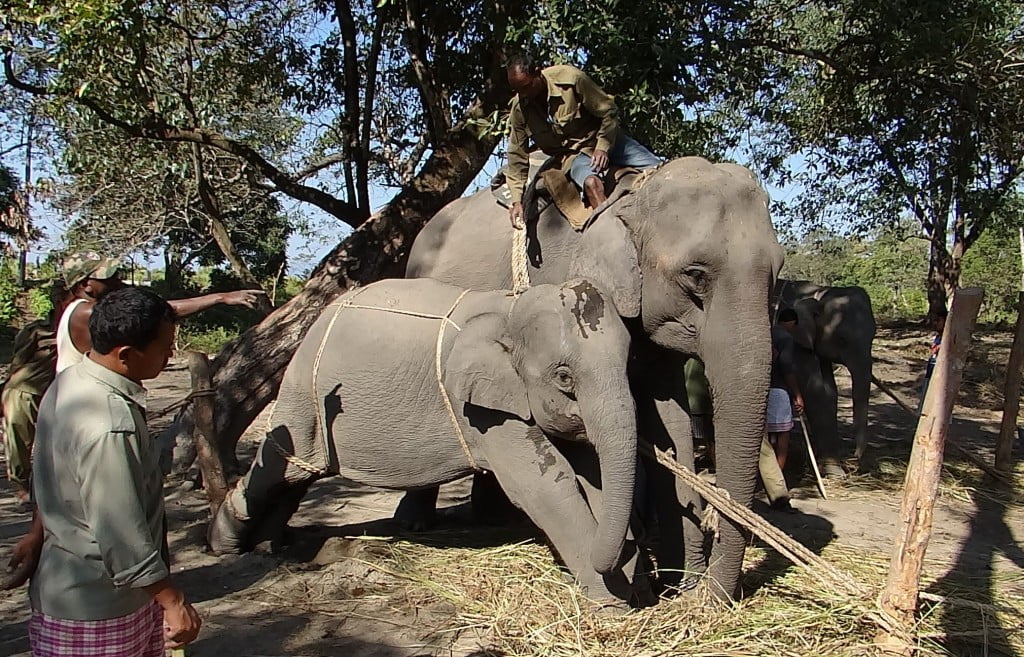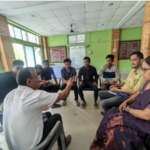Rakesh Soud herein focuses and discusses on the age old tradition of training and domesticating elephants and its intrinsic association with the folklore of Assamese society.
Elephants always appeal to the people of all ages as being the largest living land mammal. I have been in incessant touch with the elephants since a long time. My journey with the elephants started as a student of conservation science and soon learned that they are ecosystem engineers. They also serve as an umbrella species, as the conservation of elephants can preserve vast tracts of habitats and various species that live. They are not only important as species but also equally participate in the development of human culture. Besides their biological roles, they also act as a significant embalm of human society.
Both, human and elephants enjoyed a close relationship for millennia. When we talk about Assam, a home for nearly 5620 elephants according to 2011 census, it is a significant area for conservation of these mega-herbivores. Here, elephant is a key object in the folklore of Assamese society. Understanding a large animal in a cultural mosaic is always an area of interest for me, for which, my search intensified for its lore and bonds with Assamese society.
Human-Elephants interaction:
About one-fifth of the known world population of Asian elephants is found in the northeastern region of India. The four most recent censuses of the elephant population in the north-east region of India (1993, 1997, 2002 and 2008) indicate that Assam has the largest number of these animals followed by Arunachal Pradesh and Meghalaya. Mizoram and Manipur have the lowest population of elephants both in wild and captivity. My journey with the elephants started in the degraded elephant corridors of Goalpara district. However, soon I started my systematic studies to understand the elephants and their interaction with the human world.
Literary sources describes that the economic importance of elephants increased significantly from the medieval period. Assam had a very specific social connection with the elephants for a long time. Ahoms and their previous rulers also made elephant an inseparable part of royal tradition.
During the Ahom rule, ivory articles constituted a major portion of royal gifts. The most important vernacular source that we consulted in order to understand the age-old traditions of elephant management in Assamese social history was the Hastividyarnava of Sukumar Barkaith. The methods of elephant capture and training is an important part of the manuscript. The descriptions of individual characteristics, morphology, and behavior patterns of different types of elephants, and accounts of their geographical distribution, are of great interest.
Besides that, several Buranjis also mentioned the elephants as a major resource of the royal machinery. Even the British spotted the use and revenue potential of the elephant.
Elephants were used extensively both during war and in peace time for the state making progress. British had taken up the social and political benefits of the elephant ownership and established a separate department to manage the elephants known as kheddah. A. J. W. Milroy, a British official described methods like Mela shikar and Kheddah shikar that were well practiced in Assamese society in his writings.
Elephant’s Song:
In Assam, the traditional methods of elephant capture and training are interesting from the viewpoint of the rich variety of folk traditions, songs and myths that they have spawned. During my field works with the mahuts, I learned the rituals and songs practiced by the traditional tribal societies in Assam.
However, nobody had recorded those vanishing cultural wealth. It requires persuasion to convince the community mahuts to share details of their folk knowledge. There are prescribed rules and regulations for revealing these esoteric sacred rituals. The songs associated with elephants have been influenced by both social sentiments and geographical factors.
Elephant capture and training operations take place in the jungles along the Indo-Bhutan border and in the jungles of eastern Assam bordering Arunachal Pradesh and Burma. These operations are led by mahuts of Koch, Rabha and Moran communities, who spend a long time inside the deep jungles cut off from their near and dear ones. They sing songs in their camps in the evenings to relax and keep up their spirits. Some of the songs are also meant to be sung to the newly captured elephants in a bid to calm them.
Thus, inextricably connected as they are with the elephant-lore peculiar to the region, these songs are an important ingredient of the folklore of the region. Various songs highlight the love between the mahut and his beloved. The famous Goalparia folk song “…Tomra Gaile ki Aasiben.. Mor Mahut Bondhu Re…” is the best example of such sentiments.
(Rakesh Soud is a doctoral student of IIT, Guwahati and engaged with Nature’s Beckon as a conservation activist. He is focused on the conservation of wildlife and their habitat in the Northeastern region, India.)







